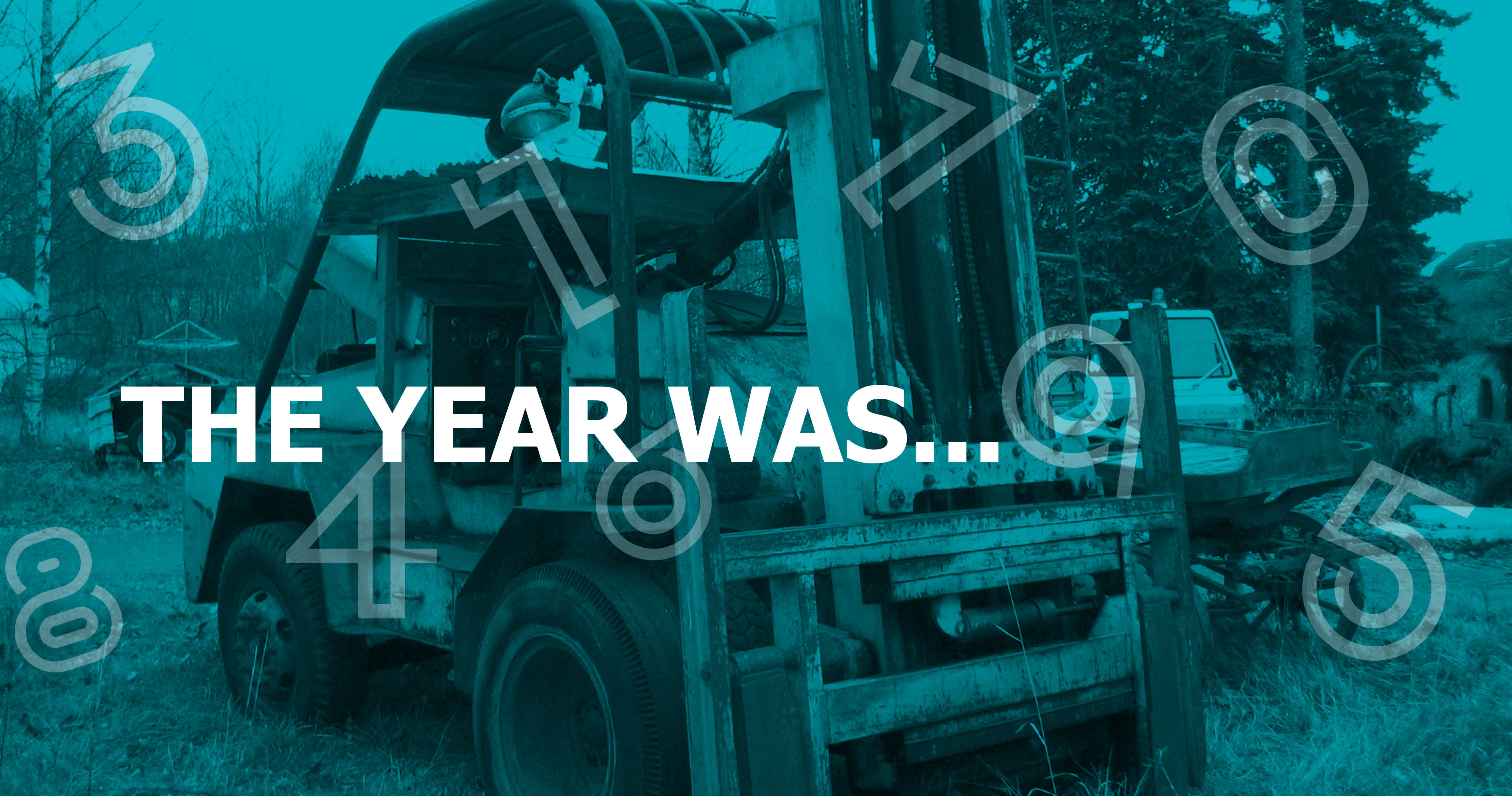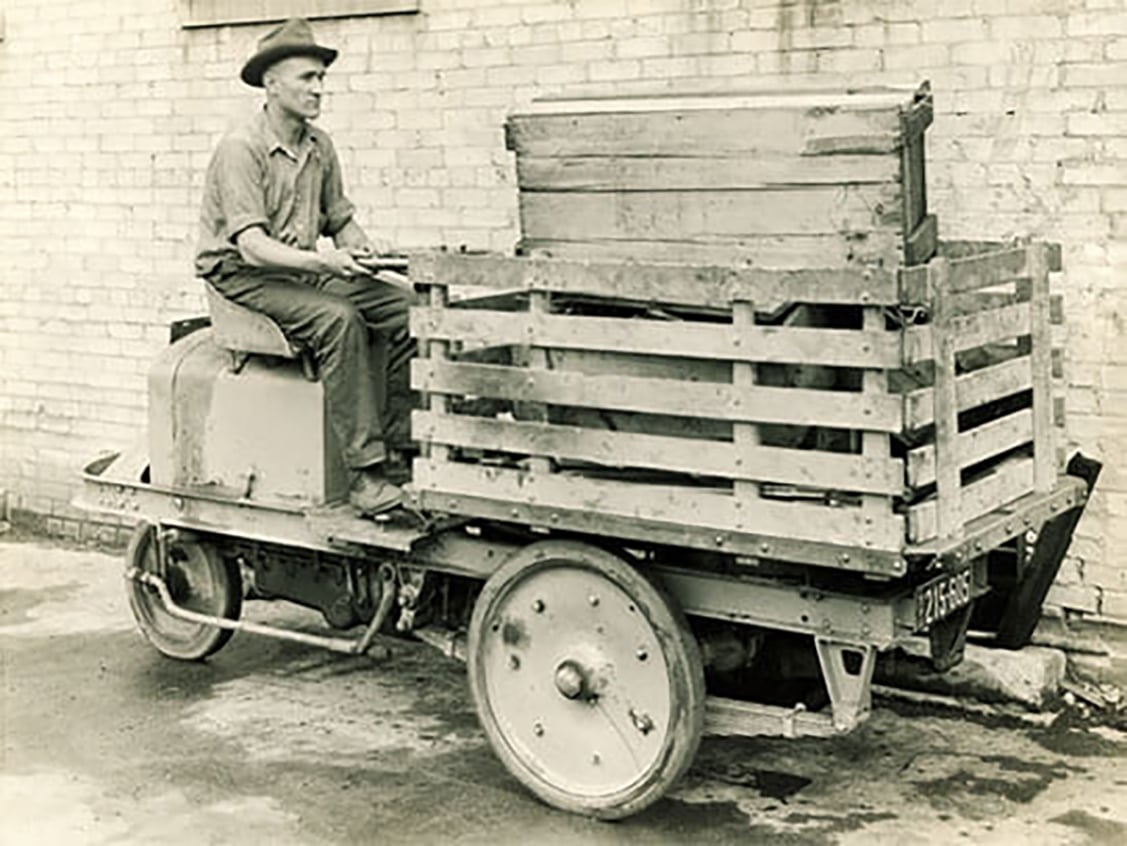Uplifting blog

1917 – the very first lift truck is born
Today we see it as a matter of course to use lift trucks and reach stackers to handle goods in industry, warehouses and ports. It wasn’t always this way. If we go back in time to the beginning of industrialism, most lifting and moving was done by hand. As the demands on efficiency increased, industry saw a need for help with the heaviest lifts. In this post, we´ll take a look at the lead-up to creation of the very first lift truck.
The wheelbarrow - an early aid to industry
The industrial revolution meant a change in work processes where we went from using muscle power to steam-driven machines. The English textile industry is usually mentioned as a forerunner, where mechanical looms were used as early as in 1760. With factory-style production of goods in large quantities, increasingly larger volumes of raw materials and finished products needed to be moved between warehouses, manufacturing and shipping. The need arose for more efficient internal logistics.
One of the first aids used in the factories was the sack wheelbarrow. This simple two-wheeled cart was completely manual, but helped factory workers more easily move large and heavy goods, for example sacks full of flour and seed.
A manual predecessor to the truck
During the second half of the 19th century, several patent applications were filed in the United States describing mechanical platforms that could both lift and move goods. The first patent was filed in 1867 by R.M. Van Sickler and was described as "a new and improved elevator". In the patent application, it was stated that the device could easily “be pushed to the desired spot, and a box or other heavy article can be raised and deposited in the required place”.
What is this if not a manual precursor to today's forklifts? Van Sickler's patent described a simple construction with an upright frame and a platform that could be raised by means of cranks. Workers could now move heavy goods in a simpler and gentler way--a revolution from both an ergonomic and efficiency perspective.

The hydraulic lift
At the beginning of the 20th century, companies began experimenting with motorized wagons to move heavy goods. The Pennsylvania Railroad is usually considered the first, when they in 1906 added a battery to a transport car used at the Altoona Train Station.
In the following years, several designs were presented that combined motorized carriages with horizontal lifting devices. In 1913, the invention that would forever change the history of the truck was patented - the hydraulic lift. But even if the invention existed, it would take decades before it gained wider use. The technology simply wasn’t ready.
1917 – the modern lift truck is born
The company usually credited with creating the modern lift truck is the American Clark Equipment Company. During World War 1, many US factories and warehouses were short of labor to move heavy goods. To remedy this, in 1917 the Clark Equipment Company presented the Tructractor, a three-wheeled, gas-powered prototype that today is considered to be the original lift truck.
Although Clark's lift truck did not have forks at this time, it would not be many years before it was updated. In 1924, Clark launched a modified Duat truck with forks and a chain-supported mast. This was a breakthrough as the goods could now be lifted higher than the truck itself. Factories and warehouses could now begin to take advantage of vertical space and stack goods at height.
The rest is, as they say - history. And it is from this exciting past that Konecranes has grown into one of today's leading companies in the lift trucks business.
Related Articles

The importance of lift truck ergonomics
In the world of material handling, lift truck drivers are responsible for moving heavy goods in...
2 Minute Read

1956 – A new era of containerization
The shipping industry has been around for centuries, and during all those years goods were...
2 Minute Read

1959 – SMV builds its first lift truck in Småland
Småland in southern Sweden is characterized by its forests and tough stony landscape. In the 1940s,...
2 Minute Read
